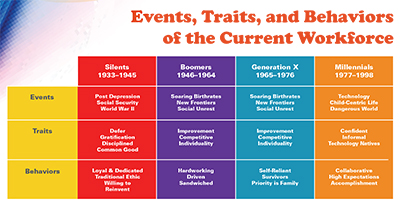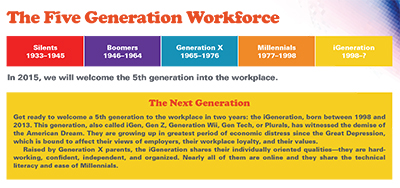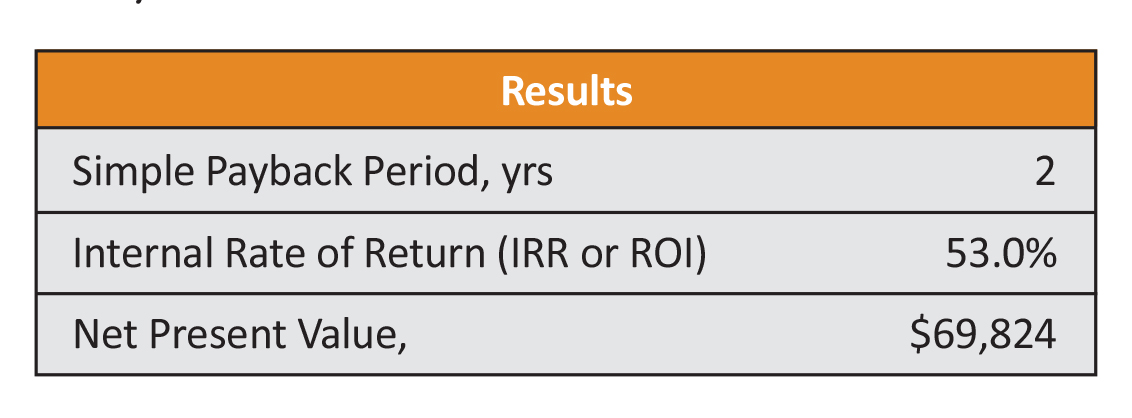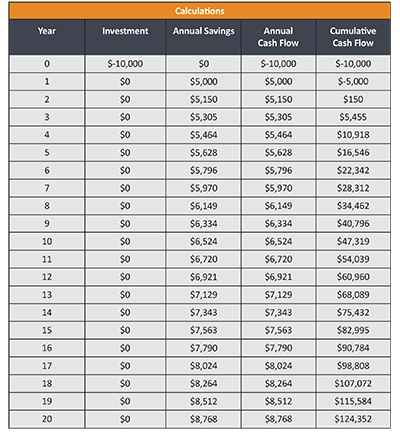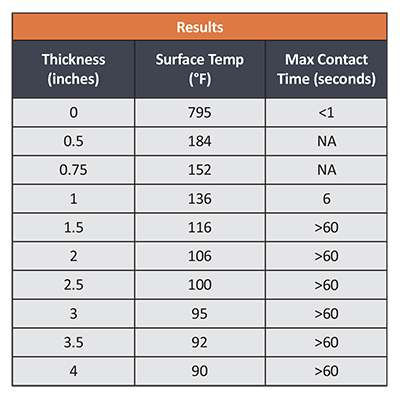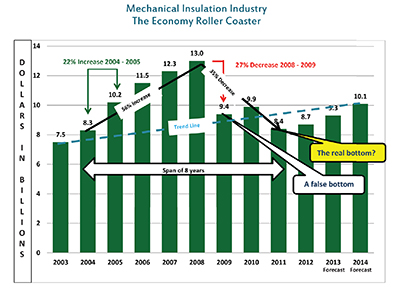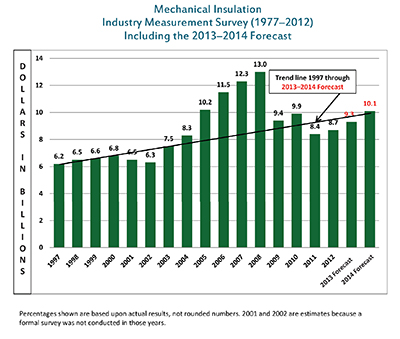As warmer
weather moves across the country, affecting more U.S. workers, it becomes
increasingly important for companies to focus on protection from heat-related
illness. A discussion of legal requirements for employers related to the
General Duty Clause and the need to address heat stress was featured in an
article titled “Heat Stress and the General Duty Clause” by NIA’s legal counsel
Gary Auman in the October 2012 issue of Insulation Outlook, available at
www.InsulationOutlook.com. The following article discusses some of the
symptoms of heat illness and offers ideas and resources for those looking to
strengthen or develop a heat illness prevention program for their workers. This
article seeks to start a discussion about this issue, and readers are encouraged
to speak to their own experts and legal counsel about how to create a plan and
protect their employees. If you have any concerns about the adequacy of your
heat illness prevention program, you are encouraged to consult with your
company physician regarding the environment in which your employees work and
the safeguards you have in place.
Heat illness is a serious condition that claims lives every year. If
your heat illness prevention program consists of simply making water coolers
available to your employees, you may be putting your workforce at risk. Because
of the significant number of individuals affected, the Occupational Safety and
Health Administration (OSHA) is emphasizing the need for all construction
companies to have a heat illness prevention program in place that includes
effective training of all employees. High temperatures, high humidity, radiant
heat sources, and strenuous physical activity are all risk factors for heat
illness, and these are all common workplace conditions in the insulation trade.
A comprehensive heat illness prevention plan is an important part of any
environmental, health, and safety program. As the summer season begins, it is
crucial to evaluate your safety programs to ensure you are doing everything
necessary to guarantee the safety and health of your employees.
Heat Illness Symptoms
Heat illness refers to a range of health problems
that occur when a person cannot maintain a normal body temperature. A person’s
body temperature depends on environmental conditions and the heat generated
through physical exertion. Excess body heat is controlled primarily by
perspiration. When a person cannot effectively shed excess body heat, then heat
illness may occur. Heat illness can take several forms, from mild heat cramps
to life-threatening heat stroke.
Exposure to hot environmental conditions, other heat sources, and
metabolic heat (from exertion) are the primary risk factors for heat illness.
Many other factors, however, can contribute to an individual’s likelihood of
developing the condition, including diet, hydration, medication, pre-existing
conditions such as high blood pressure and diabetes, obesity, and even sunburn.
These factors, combined with the necessary use of personal protective equipment
and work clothing, contribute to thousands of workers becoming ill and being at
risk for serious complications, including death.
Heat cramps are a mild form of heat illness, but they should be viewed as
a red flag for more serious problems. Heat cramps are the result of dehydration
and a loss of salt. A person suffering heat cramps may not require medical
attention as long as certain precautions are taken, including taking a break
from activity and rehydrating with water or a sports drink. Salt tablets are
generally not recommended unless directed by a doctor, as a normal, healthy
diet should replace salt loss. Everyone should drink more fluids than usual
during hot periods, even if they do not feel thirsty. Thirst is a signal that
you may already be dehydrated. An easy teaching point to pass on to your
employees is to monitor the color of their urine. Dark-colored urine is a
classic sign of dehydration.
Heat exhaustion is a more
serious form of heat illness that is caused by a loss of salt and fluids. It
can occur gradually over several days or happen more suddenly. Heat exhaustion
is characterized by heavy sweating, pale skin, tiredness, weakness, dizziness,
and nausea. An individual affected by heat exhaustion will have a rapid, weak
pulse rate and fast, shallow breathing. Although heat exhaustion is treatable,
it should not be taken lightly, as it can progress to heat stroke. Workers
suffering from heat exhaustion also may be less alert or confused, and
therefore be at greater risk for accidents. These workers should be removed
from the work area and escorted to a cooling off area. At the cooling off area
they should be monitored and the Mayo Clinic recommends that they drink cool
liquids and have wet towels, ice packs, or cooling blankets applied to their
skin after removing excess clothes while you consult with medical personnel.
Sitting them in front of a fan or misting the person with water may also help
cool them down. Be aware that further treatment, including medical help and
intravenous (IV) fluids may be needed to help them rehydrate. Remember, you
should not just direct them to a cooling area, but personally escort them, as
they may be disoriented. An individual who is suspected to be suffering from
heat illness should not be left alone or be expected to obtain their own treatment.
Heat stroke is the most serious form of heat illness. It occurs when the
body becomes unable to regulate its own temperature. Heat stroke is
characterized by rapidly rising body temperature, the cessation of an
individual’s sweating mechanism, and the body being unable to cool down. Heat
stroke can cause death or permanent disability in a matter of minutes or hours
and may lead to brain damage, loss of kidney function, and other organ damage. Warning signs of heat stroke include
flushed, hot, and dry skin; a lack of sweat; rapid, strong pulse; headache;
confusion; muscle cramps or weakness; nausea and dizziness; and loss of
consciousness. You should immediately call for emergency medical assistance if
you suspect someone is suffering from heat stroke. To treat heat stroke
immediately while waiting for medical assistance, the American Red Cross
recommends complete immersion (up to the victim’s neck) in cool water, if
possible.
Resources for Employers
Several government agencies and consensus groups
offer guidelines for preventing heat illness in the workplace. OSHA has an
ongoing campaign to prevent heat illness in outdoor workers. OSHA’s website, www.osha.gov,
details the agency’s outreach initiative, which stresses the core components of
water, rest, and shade. The website offers educational and training resources
for employers, and information on using the heat index—a temperature value that
factors in relative humidity. Since the sweating mechanism is less effective at
cooling a worker’s body in high humidity environments, the heat index, which
combines temperature with humidity, should be the resource used to determine
what safeguards to put in place. Users of the chart are cautioned that the
numbers on the chart are meant to refer to work that is out of direct sunlight;
the chart indicates that if work is in the sun with little or no breeze, then
15 degrees should be added to the temperature component.
Although Federal OSHA does not have a specific standard on heat illness,
Section 5(a)(1) of the OSH Act, known as the General Duty Clause—which is
described in the October 2012 article mentioned previously—states that
employers must provide “employment and a place of employment which are free
from recognized hazards that are causing or are likely to cause serious
physical harm…” It is clear from OSHA’s campaign on heat illness that the
threat presented by this condition, which can have serious detrimental effects,
is real. Therefore, employers have a legal obligation to provide safeguards for
their employees to protect them from the hazardous effects of heat illness.
Employers with operations in
California should be aware that Cal/OSHA has a standard on Heat Illness
Prevention for workers in outdoor places of employment. The standard has
requirements for the provision of drinking water, access to shade, training for
employees and supervisors, and observation of employees working in high-heat
situations. The Cal/OSHA standard is a good starting point for an organization
looking to develop a heat illness prevention program. It contains clear and
straightforward instructions with trigger points for specific control measures
at different temperatures.
Another resource for employers is the American Conference of
Governmental Industrial Hygienists (ACGIH), which is generally recognized as
having the most current exposure limits for workplace contaminants and physical
agents. The ACGIH publishes an exposure limit to protect workers from the
effects of heat illness. That exposure limit, called a Threshold Limit Value—or
TLV—takes into account environmental conditions, workload, and protective
clothing. The ACGIH TLV is based on a special temperature reading called a Wet
Bulb Globe Temperature (WBGT), which factors in relative humidity and radiant
heat sources such as direct sunlight. The TLV determines a work-to-rest ratio
depending on the WBGT reading and the workload. The services of a safety and
health professional, or a representative from your Workers Compensation
carrier, may be needed to perform a heat stress evaluation using the ACGIH
threshold limit value.
Another helpful resource is the National Institute for Occupational
Safety and Health, an agency established to assure safe working conditions for
employees. The NIOSH criteria document for heat stress is fairly simple to use
and sets out a 5-part program that should, if followed, provide more than
adequate protection for your employees.
Developing a Heat Illness Prevention Plan
If you determine
there is the potential for heat illness after evaluating your workplace, you
should develop a comprehensive heat illness prevention plan. The plan should
include training for workers and supervisors, procedures for acclimatization,
control measures, methods for cooling workers off, steps for caring for
heat-related illness, and emergency procedures.
Training for employees and
supervisors should include the types of heat illness and risk factors,
prevention of heat illness, signs and symptoms of heat illness, care and
emergency treatment, as well as the control measures to reduce or prevent heat
illness. Training should emphasize that employees should immediately report any
signs or symptoms of heat illness in themselves or observed in others to a
supervisor.
Control measures in the plan
should include (but are not limited to):
- Providing
drinking water and encouraging workers to drink 7 to 10 ounces of water every
15 to 20 minutes, even when they are not thirsty. - Scheduling more demanding tasks early in the day
whenever possible, when the temperature is likely to be lower. - Instructing
employees to wear loose-fitting, light-colored clothing, whenever feasible for
their positions. - Providing a
formal program for the acclimatization of employees who are new to working in
extreme temperatures or who are returning from a week or more away from work in
extreme temperatures. - Providing
shaded shelter where employees can rest out of direct sunlight. - Providing
regularly scheduled rest periods in a cooling-off area with a temperature of 75
degrees, with a frequency determined by the heat index. - Training
employees in the detection of heat-related problems in themselves and fellow
workers.
It is also recommended that employers increase the frequency of water and
rest breaks on extremely hot or humid days, and encourage employees to monitor
one another for signs of heat illness. Engineering controls are preferable when
possible, including air conditioning, fans, or general ventilation.
Acclimatization is also an
important element of a heat illness prevention plan. Workers who are not used
to the heat are more susceptible to heat illness. It can take up to 2 weeks
before a worker is fully acclimated to working in the heat. Allow more frequent
breaks for new workers, or during sudden heat spells.
Another core component of the
plan is to make sure employees know the signs of heat illness and how to react
when somebody shows signs of heat illness. Make sure an adequate number of
employees are trained in first aid and cardiopulmonary resuscitation (CPR)
procedures, post first aid and CPR instructions in worker areas, and ensure
emergency services are notified promptly. It is also important to confirm that
there are no cell phone dead zones in working areas, and that the work site is
easily accessible to emergency medical service (EMS). If the work site is in a
remote area, include alternate communication strategies and plans for getting
rapid access to EMS in your safety plan or program.
Plan Ahead
Implementing a
comprehensive heat illness prevention program will reduce the frequency and
severity of heat illness affecting your work force. Be aware of the
environmental conditions in your workplace that may lead to heat illness, and
factor in the internally generated heat from a physically demanding job. Make
sure employees and supervisors are properly trained on the environmental and
personal risk factors, as well as heat illness control measures including
water, rest, and shade. NIOSH, OSHA, and Cal/OSHA have simple guidelines based
on heat index or temperature that you may use to develop your own safety
program. For a more detailed evaluation, consider using the ACGIH TLV, which
factors in workload, other heat sources, and protective clothing. Finally, put
your plan in writing and enforce it like any other safety or health policy. It
is not enough to assume employees will take it easy if they overheat; treat
heat illness like the serious workplace hazard that it is, and manage it
accordingly. While heat illness poses a serious threat, it can almost always be
prevented if the proper precautions are taken. Finally, when you are aware that
the work you are bidding is going to have to be completed in a potentially
heat-extreme environment, factor that into your schedule and bid to allow time
for necessary acclimatization and rest periods as well as the possibility of
having to cease work early or work a short day if the heat index gets into the
extreme danger zone.

